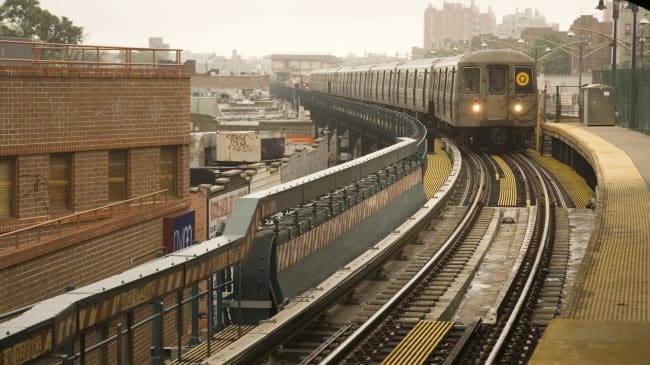Thanks in part to an in-depth investigative report in The New York Times, Americans are increasingly aware of the New York subway’s slow-moving mess and the Metropolitan’s Transportation Authority’s fiscal mismanagement.
Years of poor management and a focus on expansion over required maintenance have allowed the country’s most important subway lines to degrade.
With so much maintenance and repair work having been kicked down the road for so long, New York has reached the point where fixing the subway is going to be a long, challenging and very expensive process. With the subway facing long-term woes, state and local leaders should look to other changes that can be made now to improve the rest of the region’s transit system.
The New York City region’s biggest transit holes are in Brooklyn, Queens, and the suburbs. While no part of New York can be considered a transit desert, many locations have headways, the time between buses or trains arriving, of 30 minutes or more for much of the day. Such headways are not conducive to transit because customers have to wait far too long for the service to arrive.
To help fix the problems in suburbs that have average densities, (locations not dense enough for buses to come every 15 minutes), the state could legalize private jitneys. Jitneys are minibusses that have, in the past, offered fixed-route transit service. Originally, all transit systems were privately operated, but after World War II many went bankrupt and public entities stepped in to provide service. The reality is that many older transit services failed because the cost to ride the system was set artificially low. Had rates been allowed to rise with inflation, as with all other goods, and charge riders the actual costs associated with the trip, some private transit services might have been able to thrive. Unfortunately, now that transit is publicly operated, most U.S. communities have passed laws outlawing jitney systems. The rationale is that jitneys will cherry-pick the best routes of a transit system leaving only the most-money losing routes for public operators.
However, in New York, this plan could be different from past jitney operations because the public entity would operate transit in the city center and high-density areas, while private operators could run jitneys in medium-density suburbs. As a result, the two services would not be competing. Rather, they would be specializing in different types of service. One entity would oversee the jitney service; it could be the metropolitan planning organization, the state, or a regional transit entity. That entity could solicit bids through a competitive process for the jitney service. This competitive process should focus on cost and quality of service. The government agency entity could award one service contract to the best proposal or split up the bids, so different companies could operate in different parts of New York.
Jitneys are starting to make a comeback in other cities. Chariot, owned by Ford, is a private bus provider that supplements traditional fixed-route service and entices riders with amenities like reliable internet connectivity and refreshments. It is offering service in San Francisco, Austin, and several other U.S. markets. Chariot would consider entering the New York market if the law was changed to allow them to operate.
To fix the problem with transit service in New York City’s low-density suburbs and exurbs, the coordinating entity could contract out service with Uber, Lyft, or a local ride-sharing company. New York’s politicians have been complaining about traffic congestion caused by ride-sharing vehicles in midtown Manhattan. But some lower density areas of Queens and Brooklyn, as well as many suburbs, would love to see more ridesharing vehicles.
It is expensive to implement fixed-route transit in lower density areas. It is actually cheaper to contract with a ridesharing company than it is to establish transit service. Many transit agencies across the country, including the Metropolitan Atlanta Regional Transportation System (MARTA) and the Dallas Area Rapid Transit (DART), are already contracting with ridesharing companies to enhance mobility services.
Thus far, transit agencies have mostly contracted with ridesharing companies for first-mile and last-mile rides from the transit station to home and vice versa. But transit agencies could also contract with ridesharing companies to provide transit services in the suburbs. Many agencies already contract paratransit service (service for the elderly and disabled) with Uber and Lyft. Some agencies contract with taxi companies, but taxis are typically more expensive. Contracting more traditional bus service with these companies is the next logical step. Such contracts would be a win-win-win for public transit providers, the ridesharing company, and customers.
There’s no quick fix for the massive problems facing New York City’s subway system, but that doesn’t mean political leaders can’t make significant improvements in a variety of other transit projects that could make it easier to get around the region.

